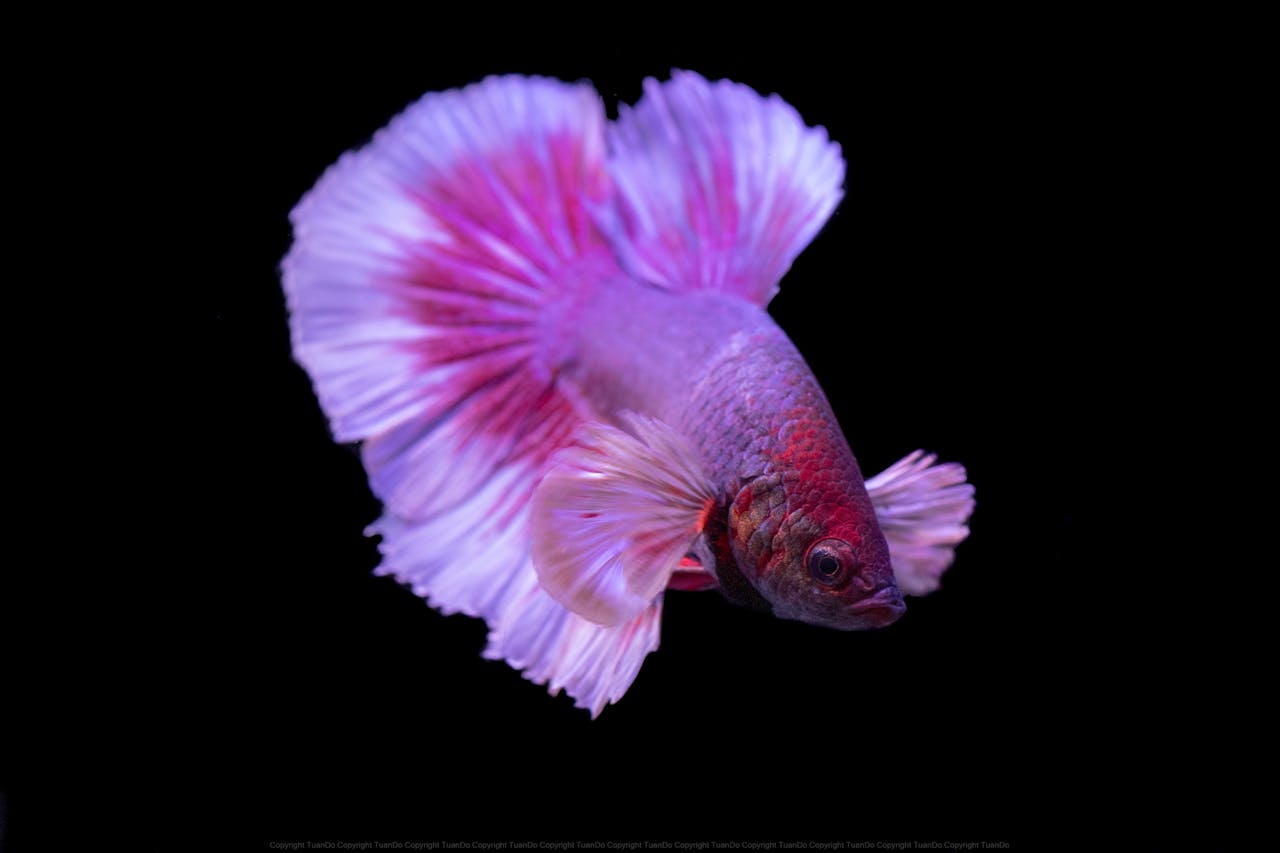Fighting fish, commonly known as Betta fish, have captivated aquarists and casual observers alike with their vibrant colors and unique personalities. Originating from the shallow waters of Southeast Asia, these fish have a rich history that intertwines with human culture. Initially bred for their fighting abilities, they have since become popular pets due to their striking appearance and relatively easy care requirements.
As we delve into the world of fighting fish, we will explore their beauty, behavior, and the responsibilities that come with keeping them as pets. The allure of fighting fish extends beyond their physical attributes; they embody a spirit of resilience and adaptability. Their natural habitat consists of rice paddies, swamps, and slow-moving streams, where they have learned to thrive in challenging conditions.
This adaptability is a testament to their evolutionary journey, making them not only fascinating creatures but also a symbol of survival. As we embark on this exploration, we will uncover the many facets of fighting fish that make them a beloved choice for both novice and experienced aquarists.
Key Takeaways
- Fighting fish, also known as Betta fish, are known for their vibrant colors and aggressive nature.
- The stunning beauty of fighting fish makes them a popular choice for aquarium enthusiasts.
- Understanding the aggressive nature of fighting fish is important for their proper care and maintenance.
- Proper care for fighting fish is crucial for their health and well-being, including maintaining clean water and providing a suitable environment.
- Breeding and reproduction of fighting fish can be a rewarding experience for aquarium hobbyists.
The Stunning Beauty of Fighting Fish
One cannot discuss fighting fish without acknowledging their breathtaking beauty. These fish are renowned for their vibrant colors and flowing fins, which can range from deep blues and fiery reds to soft pastels and iridescent hues. Each Betta fish is a unique work of art, with patterns and colors that can change depending on their mood and environment.
The sheer variety available in the market today is astounding, with breeders continuously developing new color combinations and fin types that leave us in awe. The physical characteristics of fighting fish are not just for show; they play a crucial role in their behavior and interactions. The long, flowing fins serve as a display during courtship rituals and territorial disputes.
When we observe a Betta flaring its fins, we witness a stunning display of confidence and beauty that is both mesmerizing and intimidating. This visual spectacle is a reminder of the intricate balance between aesthetics and survival in the animal kingdom.
Understanding the Aggressive Nature of Fighting Fish

While the beauty of fighting fish is undeniable, it is essential to understand their aggressive nature. Betta fish are known for their territorial behavior, particularly males, who will fiercely defend their space against intruders.
As a result, male Bettas often cannot coexist peacefully with one another; introducing two males into the same tank can lead to severe injuries or even death. Understanding this aggressive behavior is crucial for anyone considering keeping fighting fish. We must create an environment that minimizes stress and potential conflict.
This means providing ample space, hiding spots, and carefully selecting tank mates if we choose to house them with other species. By recognizing their natural instincts, we can foster a more harmonious living situation for our aquatic companions.
The Importance of Proper Care for Fighting Fish
| Aspect | Importance |
|---|---|
| Water Quality | Essential for fish health and well-being |
| Temperature | Regulates fish metabolism and immune system |
| Diet | Provides necessary nutrients and energy |
| Tank Size | Adequate space for fish to swim and thrive |
| Water Changes | Removes toxins and maintains water quality |
Caring for fighting fish requires a commitment to understanding their specific needs. These fish thrive in warm water temperatures ranging from 76°F to 82°F (24°C to 28°C) and require clean, well-filtered environments to flourish. Regular water changes are essential to maintain optimal water quality, as Bettas are sensitive to ammonia and nitrite levels.
We must also be mindful of the tank size; while Bettas can survive in small bowls, they truly thrive in larger tanks that provide ample swimming space. Feeding our fighting fish a balanced diet is another critical aspect of their care. High-quality pellets specifically formulated for Betta fish should be the cornerstone of their diet, supplemented with occasional treats like freeze-dried or frozen bloodworms and brine shrimp.
Overfeeding can lead to health issues, so we must be diligent about portion sizes and feeding schedules. By prioritizing proper care, we can ensure our fighting fish live long, healthy lives filled with vibrant colors and lively personalities.
Breeding and Reproduction of Fighting Fish
Breeding fighting fish can be an exciting yet challenging endeavor for aquarists. The process begins with selecting healthy breeding pairs that exhibit desirable traits such as color, fin type, and overall vigor. Once we have chosen our pair, we must prepare a breeding tank that mimics their natural environment—warm water, plenty of hiding spots, and gentle filtration are essential components.
During the breeding process, the male Betta will build a bubble nest at the water’s surface to attract the female. After successful courtship, the female will lay her eggs in the nest, which the male will then fertilize and protect. This nurturing behavior is fascinating to observe; however, it is crucial to separate the male from the female after spawning to prevent aggression.
As we witness this remarkable cycle of life unfold, we gain a deeper appreciation for the complexities of Betta reproduction and the responsibilities that come with it.
The Role of Fighting Fish in Aquatic Ecosystems

The Importance of Preserving Natural Habitats
By understanding their role in the ecosystem, we can appreciate the significance of preserving their natural habitats and ensuring sustainable practices in aquaculture.
Fighting Fish as Environmental Indicators
Fighting fish serve as indicators of environmental health. Their sensitivity to changes in water quality makes them valuable for monitoring ecosystem conditions. When we observe declining populations or changes in behavior among Betta fish in the wild, it can signal underlying issues such as pollution or habitat destruction.
Advocating for Responsible Environmental Practices
By advocating for responsible environmental practices, we contribute to the preservation of not only fighting fish but also the diverse ecosystems they inhabit.
Popular Varieties of Fighting Fish
The world of fighting fish is rich with diversity, boasting numerous varieties that each possess unique characteristics. Among the most popular are the Veil Tail Betta, known for its long, flowing fins; the Crowntail Betta, which features spiky fin extensions; and the Halfmoon Betta, celebrated for its semi-circular tail that spreads wide when flared. Each variety offers something different for enthusiasts to admire and appreciate.
In addition to these well-known types, there are also rare color morphs such as the Dragon Scale Betta, which showcases iridescent scales reminiscent of dragon skin, and the Koi Betta, which mimics the patterns found on traditional Koi fish. As we explore these varieties, we find ourselves drawn into a world where genetics and artistry intersect, creating stunning displays of nature’s creativity.
Tips for Keeping Fighting Fish as Pets
Keeping fighting fish as pets can be a rewarding experience if approached with care and knowledge. First and foremost, we should invest in a suitable tank that provides enough space for our Betta to swim freely—ideally at least five gallons or more. This allows for better water quality management and reduces stress levels.
Additionally, we must be mindful of tank mates if we choose to create a community aquarium. Peaceful species such as snails or certain types of tetras can coexist with Bettas if introduced carefully; however, we should always monitor interactions closely to prevent aggression. Regular maintenance routines—such as water changes and tank cleaning—are essential to keep our aquatic environment healthy.
Lastly, we should take time to observe our fighting fish daily.
By providing proper care and attention, we can enjoy the vibrant presence of these remarkable creatures in our homes while fostering a deeper connection with nature.
In conclusion, fighting fish are not just beautiful pets; they are complex creatures with unique behaviors and needs that require our understanding and respect. By appreciating their beauty while acknowledging their aggressive nature, we can create an enriching environment that allows them to thrive. Whether we are drawn to their stunning colors or intrigued by their fascinating behaviors, there is no denying that fighting fish hold a special place in the hearts of many aquarists around the world.
If you are interested in learning more about fighting fish, you may want to check out this article on how to properly care for betta fish. This article provides valuable information on the proper care and maintenance of these beautiful and unique fish. It is important to understand the specific needs of betta fish in order to ensure they live a long and healthy life. By following the tips and advice in this article, you can create a thriving environment for your betta fish to thrive in.


